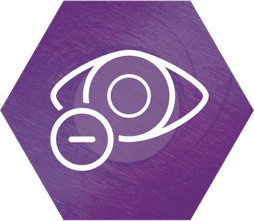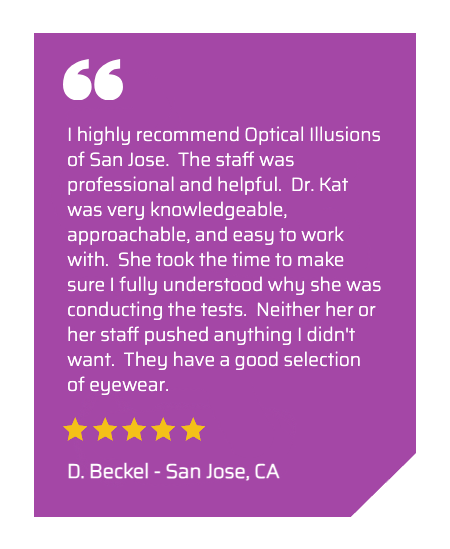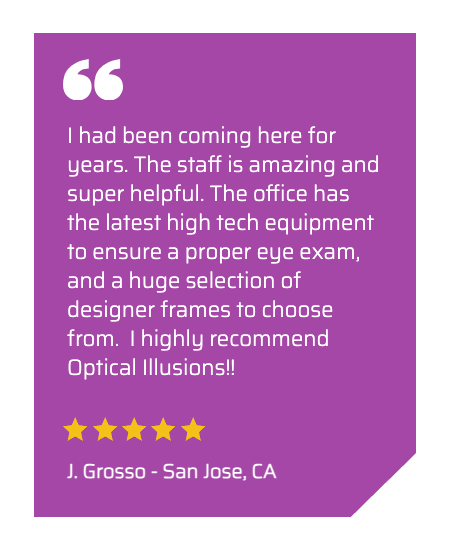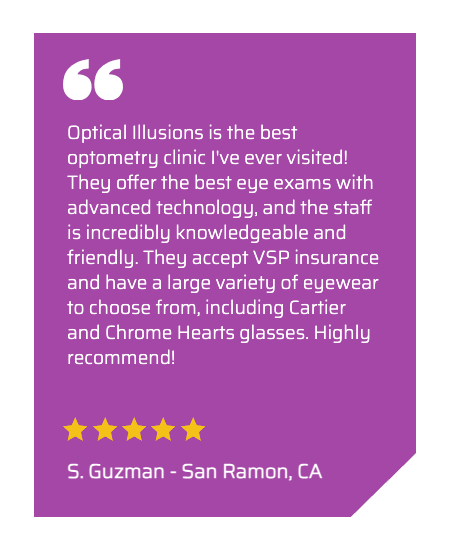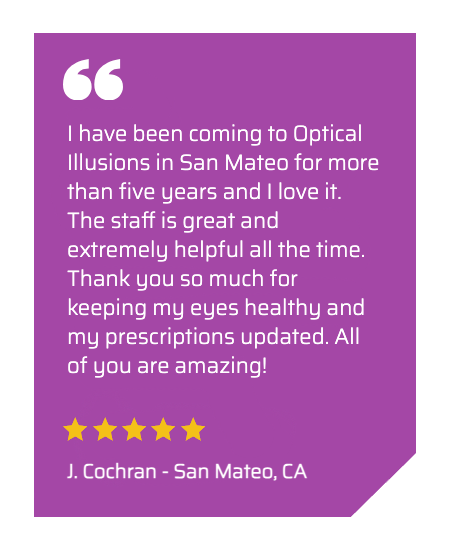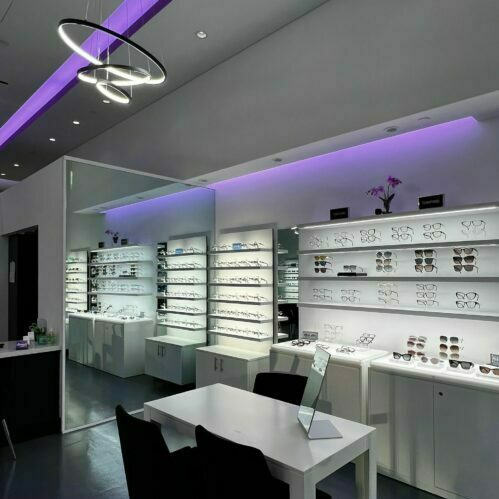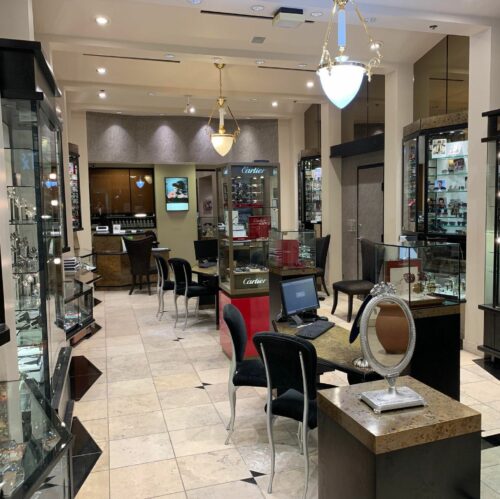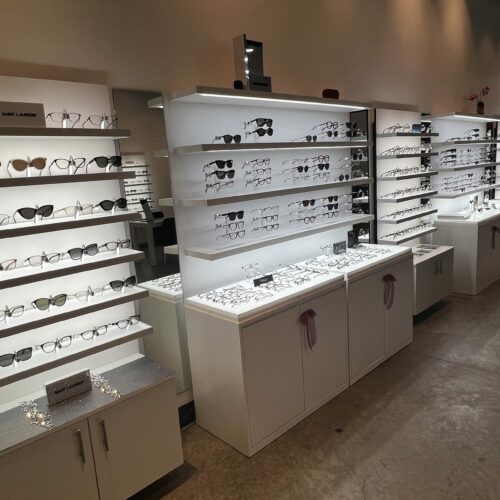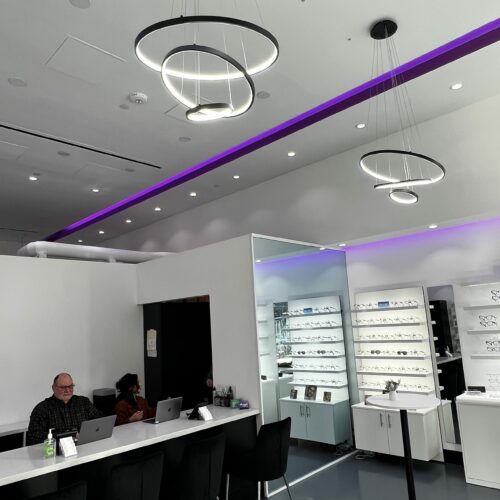The Prevalence of
Diabetes in the USA
Diabetes is on the rise, and diabetic eye exams are more important than ever. According to the Centers for Disease Control and Prevention (CDC), estimates for 2018 were that 34.2 million people of all ages (10.5% of the US population) had diabetes. As of the last few years, it has become the number one cause of preventable blindness in America. Diabetes is a prevalent health issue across the United States and can lead to issues that cause vision problems like diabetic retinopathy and other serious ailments.
At Optical Illusions: An Optometric Practice, your eye health is of the utmost importance to us. We provide a comprehensive opportunity to treat vision problems caused by diabetes and diagnose any underlying eye health issues through our state-of-the-art technology for diabetic eye exams.

What is Included in a Diabetic
Eye Exam?
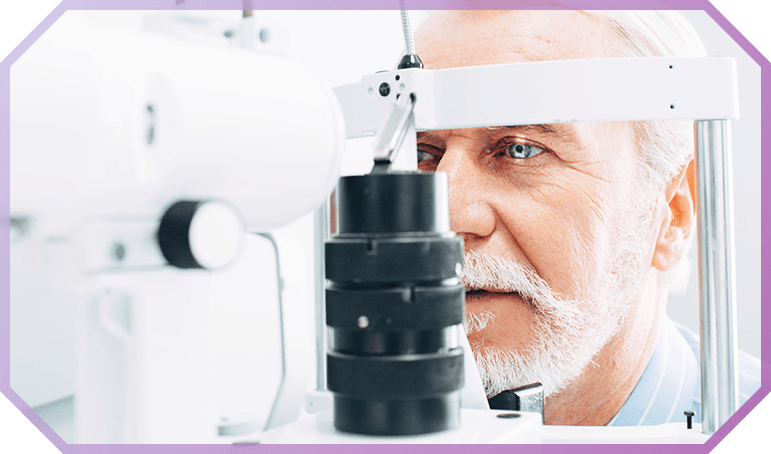
Diabetic eye exams will include various techniques and tools to assess your vision, eye health, and ocular diseases and conditions that can be associated with diabetes. Some of the tests that are included in a diabetic eye exam are:
Visual Acuity Testing
Much like a regular eye exam, our eye doctors will check your visual acuity with an eye chart during your diabetic eye exam. Diabetes has the potential to cause several changes inside your eyes that can potentially harm the visual clarity of your eyes. A visual acuity test will help determine what those changes are and clarify what the proper approach for treatment will be.
Fundus Evaluation
Fundoscopy describes an examination of the back of the eyeball. The tests in this portion of a diabetic eye exam will explore the area of the eye where your retina and optic nerve are located.
One of our optometrists will examine the back of your eyeball with one or more of the following procedures:
- Direct ophthalmoscope—By using a hand-held instrument with a bright light, your optometrist will accurately assess if there are any issues with the back of your eye.
- Indirect ophthalmoscope—This test involves a mounted light and a lens working in tandem to help provide your optometrist with a much wider-angle view of the back of your eye.
- Slit-lamp ophthalmoscopy—This test will utilize a slit lamp. Your optometrist will use this device to generate a highly magnified, 3D view of the back of your eye, including the retina and optic nerve.
Fundus photography will also be used to examine the back of your eyeball by taking a high-resolution photo with the state-of-the-art Optos Silverstone. These photos, along with the fundoscopy, will give our optometrists a complete picture of what specific issues your diabetes may be causing to the back of your eye.
OCT Imaging
Optical coherence tomography (OCT) is a non-invasive imaging test that uses light waves to take cross-section pictures of your retina.
With OCT, our doctors can see each of the retina’s ten distinctive layers. This allows them to map and measure their thickness and help with diagnosis and treatment plans for diabetic retinopathy.
Optical Illusions uses the Optos Silverstone and Topcon Maestro2, the gold standard and most advanced OCT device available today.
Visual Field Testing
People with diabetes and high blood pressure have a greater risk of developing blocked blood vessels in the optic nerve and retina. They may need visual field testing to monitor any effects of these conditions on their vision.
Optical Illusions uses the Virtual Field AR Headset, a modern and comfortable perimetry device to measure your visual fields.


Diabetic Eye Diseases
Diabetic retinopathy occurs when fluctuating blood sugar levels cause damage to the blood vessels within the eye. It may be difficult for you to recognize the symptoms of diabetic retinopathy early on in its development. But once it reaches its later stages, recognizable symptoms start to emerge as blood vessels in the retina may bleed into the vitreous (the fluid contained in our eyes.
Diabetic macular edema is a result of diabetic retinopathy. This disease goes a step further and damages the macula (a specific part of the retina) and is caused by an excess of fluid in the macula.
Although these issues can be a worrisome prospect for those who have a diagnosis of (or are at risk of developing) diabetes, vision loss due to diabetic eye disease is preventable. Early diagnosis and treatment of diabetic retinopathy can reduce the risk of blindness by 95%.
You Don’t Have to Deal With Diabetes Alone
We’re here to help—you don’t have to deal with diabetes and the accompanying visual problems alone. The team at Optical Illusions: An Optometric Practice is committed to hearing all of your concerns and providing you with the right information to help you deal with your condition. Please do not hesitate to contact us if you have any questions or concerns.
Our Locations

Complete
Family Eye Exams

An eye exam is an essential part of preventive health care. At Optical Illusions: An Optometric Practice, we invest in industry-leading diagnostic technology that gives us an unprecedented view of your eye health and vision.
With this technology, we can provide truly personalized and comprehensive eye care to patients of all ages.
Access high-quality eye care from a team that genuinely cares.



Our Brands







Our Reviews






